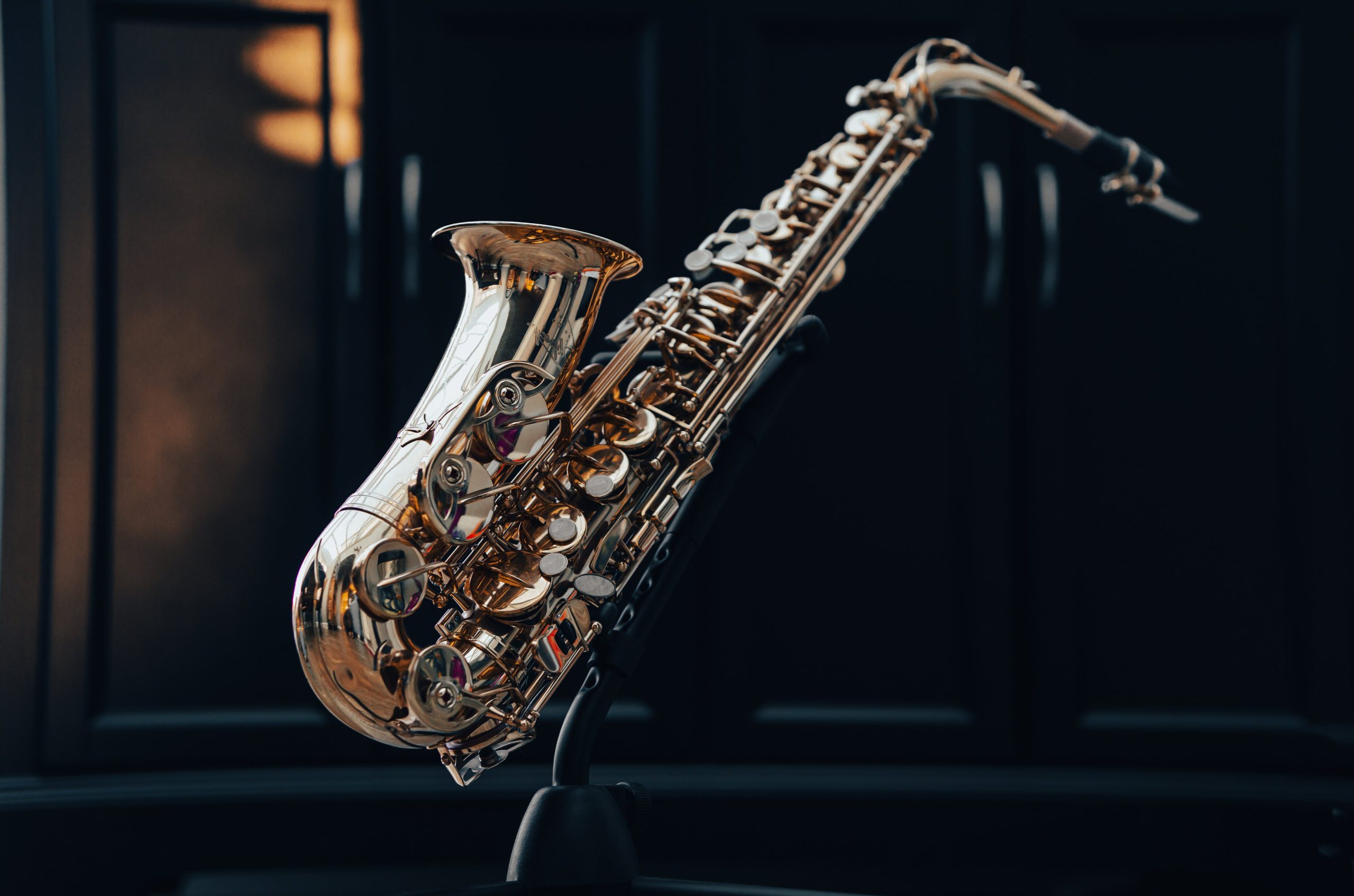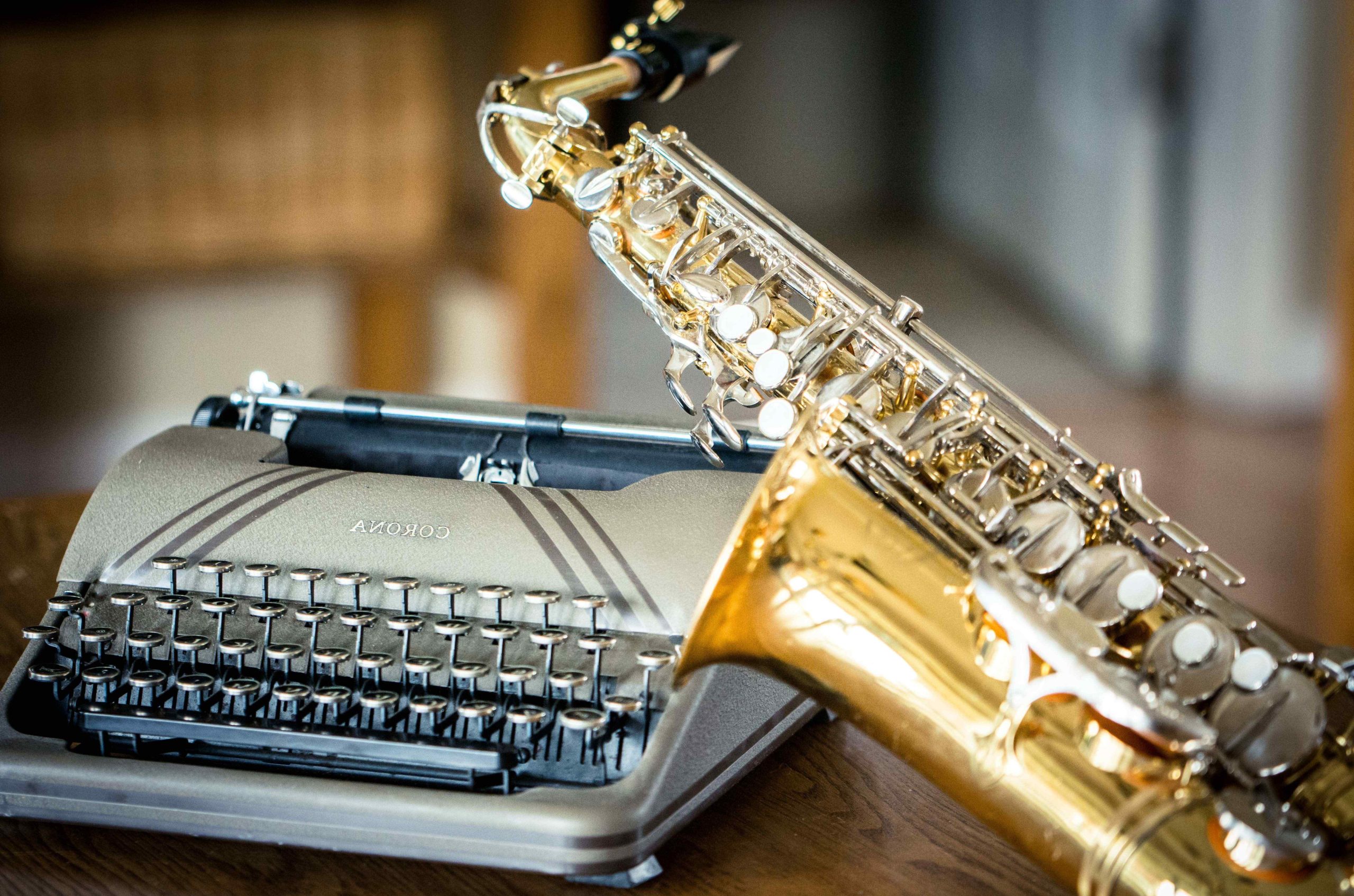Tenor Saxophone Selection Tips
The tenor saxophone is a popular instrument among jazz, blues, and classical musicians, known for its rich, warm tone and versatility. When selecting a tenor saxophone, there are several key factors to consider, from the type of saxophone to the quality of the instrument to your playing level. In this article, we’ll discuss some tips to help you choose the right tenor saxophone for your needs.
First and foremost, it’s important to consider the type of saxophone you want. There are several types of tenor saxophones on the market, including professional models, student models, and intermediate models. Professional models are typically the most expensive, but they offer the highest level of sound quality and playability. Student models are designed for beginner saxophonists and are more affordable, while intermediate models are designed for saxophonists who are no longer beginners but not yet professionals.
Another important factor to consider is the quality of the instrument. Look for saxophones made from high-quality materials, such as brass or nickel, and with well-constructed key mechanisms. Make sure the saxophone has a smooth and responsive key action, and look for a saxophone with a well-balanced tone. Some of the most popular brands of tenor saxophones include Yamaha, Selmer, and Conn.
Your playing level is another important factor to consider when selecting a tenor saxophone. If you’re a beginner, it’s important to choose a saxophone that is easy to play and has a clear tone. Student models are often the best option for beginners. If you’re an intermediate player, consider an intermediate model saxophone, which will offer you more control and expressiveness. And if you’re a professional saxophonist, a professional model saxophone will provide you with the highest level of sound quality and playability.
It’s also important to consider the mouthpiece that comes with the saxophone. The mouthpiece is a crucial component of the saxophone, and it affects the sound of the instrument. Look for a saxophone with a mouthpiece that is comfortable to play and that provides a clear, full tone. Some saxophonists prefer to purchase their own mouthpiece, separate from the saxophone, as they feel it gives them more control over the sound they produce.
When purchasing a tenor saxophone, it’s important to try out different models before making a decision. Play each saxophone in the store, if possible, and listen to the sound quality. Make sure the saxophone feels comfortable to play, and that the key action is smooth and responsive. Consider the weight of the saxophone, as well, as this can affect how comfortable the saxophone is to play for long periods of time.
Another important factor to consider is the case that comes with the saxophone. The case protects the saxophone from damage during transport and storage, so it’s important to choose a case that is durable and well-made. Look for a case with sturdy latches, a comfortable handle, and enough padding to protect the saxophone from scratches and dings.
Finally, consider the cost of the saxophone and the accessories you’ll need. A good tenor saxophone can cost anywhere from a few hundred dollars to several thousand dollars, so it’s important to set a budget and stick to it. Keep in mind that you’ll also need to purchase reeds, a strap, a cleaning cloth, and other accessories, so factor those costs into your budget as well.
Types of Tenor Saxophones

The tenor saxophone is one of the most popular saxophones in the world, thanks to its unique sound, versatility, and ease of play. With so many brands, models, and features to choose from, it can be difficult to determine the best type of tenor saxophone. However, by taking into account the player’s individual needs, skill level, and budget, it is possible to find the perfect sax for you.
First and foremost, it’s important to consider the player’s skill level. If you’re a beginner, you may want to start with an entry-level saxophone, such as a student model. These saxophones are typically made from lower-grade materials and feature a simpler key system, but they offer an affordable option for those who are just starting out.
If you’re an intermediate or advanced player, you may want to consider a professional-grade saxophone. These saxophones are usually made from higher-quality materials and feature a more complex key system, which allows for greater expression and control. They also often come with a better warranty and a higher price tag, so it’s important to make sure you’re getting a saxophone that meets your needs and is worth the investment.
Another important factor to consider is the saxophone’s sound. The sound of a saxophone is largely determined by its construction and materials, as well as the player’s technique. Different saxophones will produce different tonal characteristics, so it’s important to try out different models to determine which one best fits your personal style. Some popular brands in the intermediate and professional categories include Yamaha, Selmer, and Keilwerth.
Additionally, it’s important to consider the saxophone’s feel and playability. The saxophone should feel comfortable in your hands and be easy to play, regardless of whether you’re a beginner or an advanced player. Look for saxophones that have a well-balanced key system, comfortable grip, and a responsive touch.
Finally, budget is another important consideration when choosing the best type of tenor saxophone. Entry-level saxophones can range from several hundred to a few thousand dollars, while professional-grade saxophones can easily reach prices of $10,000 or more. Determine your budget and prioritize the features that are most important to you, such as sound quality, key system, and durability, to find a saxophone that offers the best value for your money.
Tenor Saxophone Brands
The tenor saxophone is a popular instrument that is used in many different musical genres, including jazz, blues, and classical music. With so many different brands of tenor saxophones on the market, it can be difficult to determine which one is right for you. This article will provide an overview of some of the most popular tenor saxophone brands, as well as their strengths and weaknesses, to help you make an informed decision.
Yamaha
Yamaha is a well-known brand that has been producing high-quality saxophones for many years. Their saxophones are known for their durability, reliability, and affordability, making them a popular choice among beginner and intermediate players. Yamaha offers a wide range of tenor saxophones, including entry-level student models and professional-grade instruments. Some of their most popular models include the Yamaha YTS-62 and the Yamaha YTS-82Z.
Selmer
Selmer is a French brand that is widely considered to be one of the best saxophone manufacturers in the world. Their saxophones are known for their rich, warm tone and excellent playability. Selmer offers a range of tenor saxophones, from beginner models to professional-grade instruments. Some of their most popular models include the Selmer Paris Series II and the Selmer Paris Reference 54.
Keilwerth
Keilwerth is a German brand that is known for their high-quality saxophones. Their saxophones are made from top-quality materials and are designed for exceptional sound, playability, and durability. Keilwerth offers a range of tenor saxophones, from beginner models to professional-grade instruments. Some of their most popular models include the Keilwerth Tone King and the Keilwerth SX90R.
Cannonball
Cannonball is an American brand that is known for producing saxophones with a unique sound and design. Their saxophones are made from top-quality materials and are designed for exceptional sound and playability. Cannonball offers a range of tenor saxophones, from beginner models to professional-grade instruments. Some of their most popular models include the Cannonball Big Bell Stone Series and the Cannonball Adderley Vintage Series.
Conn-Selmer
Conn-Selmer is a combination of two well-known brands, Conn and Selmer. This brand is known for producing saxophones that are designed for both beginners and professionals. Their saxophones are made from top-quality materials and are designed for exceptional sound and playability. Conn-Selmer offers a range of tenor saxophones, from beginner models to professional-grade instruments. Some of their most popular models include the Conn-Selmer Prelude and the Conn-Selmer Mark VI.
Martin
Martin is an American brand that has been producing saxophones for over 100 years. Their saxophones are known for their exceptional sound, playability, and durability. Martin offers a range of tenor saxophones, from beginner models to professional-grade instruments. Some of their most popular models include the Martin Committee and the Martin Handcraft.
Parts of a Tenor Saxophone
The tenor saxophone is a complex and sophisticated musical instrument, composed of many different parts that work together to produce its signature sound. Understanding the various components of a tenor saxophone is essential for anyone looking to play the instrument effectively and for anyone interested in maintaining or repairing their saxophone.
Mouthpiece
The mouthpiece is the part of the saxophone that is placed in the player’s mouth. It is made up of a reed, which vibrates against the mouthpiece when the player blows into it, producing sound. The mouthpiece also has a chamber, which helps to shape and direct the air column as it moves through the saxophone. Mouthpieces come in a variety of shapes, sizes, and materials, and the right mouthpiece can greatly impact the sound and playability of the saxophone.
Neck
The neck of the saxophone is the part that connects the mouthpiece to the body of the instrument. It is an important part of the saxophone, as it helps to direct the air column as it travels from the mouthpiece to the body of the saxophone. The neck also helps to stabilize the mouthpiece, keeping it in place while the player is playing.
Body
The body of the saxophone is the largest part of the instrument and is made up of several different sections, including the bell, the bow, and the body tubes. The body is designed to amplify the sound produced by the reed and to direct it out of the saxophone. The body is also where the keys and pads are located, which control the sound produced by the saxophone.
Keys and Pads
The keys and pads of a saxophone are what make it possible for the player to produce a wide range of notes and tones. The keys are the metal levers that are played by the fingers, while the pads are the small pieces of felt or leather that cover the holes in the body of the saxophone. The keys and pads work together to control the flow of air through the saxophone, producing sound when the player blows into the mouthpiece.
Tone Holes
The tone holes of a saxophone are the small openings in the body of the instrument that allow air to flow in and out. These holes are covered by the pads when the keys are not being played, and are uncovered when the keys are pressed. The position and size of the tone holes can greatly impact the sound produced by the saxophone.
Key Mechanism
The key mechanism of a saxophone is what allows the keys to move and control the flow of air through the saxophone. The key mechanism is a complex system of rods, springs, and pivot points that allows the keys to move smoothly and easily, making it possible for the player to produce a wide range of notes and tones.
Thumb Rest
The thumb rest of a saxophone is a small metal bar that is located near the bottom of the saxophone, just above the thumb rest. It is used to support the saxophone while the player is playing and helps to keep the saxophone stable while the player is playing.
Strap Rings
The strap rings of a saxophone are small metal rings that are attached to the body of the instrument. They are used to secure a saxophone strap, which helps to keep the saxophone stable and secure while the player is playing.

How to Clean a Tenor Saxophone
Cleaning a tenor saxophone is an important aspect of maintaining its quality and longevity. A well-maintained saxophone not only sounds better but also lasts longer. In this article, we will outline the steps to properly clean your tenor saxophone.
Materials needed:
Soft cloth
Cleaning rod
Cleaning solution
Mouthpiece brush
Key oil
Pad paper
Step 1: Disassemble the saxophone
The first step in cleaning your tenor saxophone is to disassemble it. This means removing the neck and separating the keys from the body of the saxophone. Carefully loosen the screws that hold the keys in place and gently remove them. Place the keys in a safe place where they won’t get damaged or lost.
Step 2: Clean the body of the saxophone
Use a soft cloth to gently clean the body of the saxophone. Avoid using any cleaning solution or water, as this can damage the finish on the saxophone. If there are any tough spots or residue, use a soft-bristled brush to gently remove it.
Step 3: Clean the neck of the saxophone
The neck of the saxophone can be cleaned with a soft cloth and cleaning solution. Dip the cloth into the cleaning solution and gently clean the neck, paying special attention to the inside of the neck where saliva and other residue can build up. Be sure to thoroughly dry the neck after cleaning.
Step 4: Clean the mouthpiece
The mouthpiece of the saxophone can be cleaned using a mouthpiece brush and cleaning solution. Dip the brush into the cleaning solution and gently scrub the inside and outside of the mouthpiece. Rinse the mouthpiece thoroughly with water and dry it completely.
Step 5: Clean the keys
Use a soft cloth and cleaning solution to clean the keys of the saxophone. Be sure to pay special attention to the spaces between the keys and the key rods, as this is where dirt and grime can build up. After cleaning, use key oil to lubricate the key rods, which will make it easier for the keys to move.
Step 6: Reassemble the saxophone
Once you have cleaned all of the components of the saxophone, it is time to reassemble it. Carefully place the keys back onto the body of the saxophone and tighten the screws. Make sure that all of the keys are properly aligned and functioning properly.
Step 7: Check the pads
Check the pads of the saxophone to make sure that they are clean and in good condition. If any of the pads are dirty or damaged, use pad paper to clean them or replace them if necessary.
How to Learn to Play the Tenor Saxophone (Step by Step)
Learning to play the tenor saxophone can be a challenging yet rewarding experience. The first step in learning to play the tenor saxophone is to purchase an appropriate instrument. To ensure that the instrument is of high-quality, it is best to purchase from a reputable dealer or manufacturer. It is also important to select an instrument that has been properly adjusted and maintained. Once the instrument has been purchased, the musician must become familiar with the various parts and how they work together.
The next step in learning to play the tenor saxophone is to learn proper posture and technique. This includes sitting up straight in a comfortable chair, keeping the wrists elevated, and relaxing the arms. Additionally, it is important to understand how to use the tongue to control the tone and timbre of the music. Musicians should also practice proper breathing techniques while playing the instrument.
Once the proper posture and technique has been established, musicians can begin to learn the basics of playing the tenor saxophone. This includes learning how to read music, understanding scales, intervals, and chords, as well as developing improvisation skills. Additionally, musicians must learn to play with correct dynamics and articulation in order to produce beautiful music. To help with this process, musicians can take private lessons, attend group classes, or even practice by themselves.
The next step in learning to play the tenor saxophone is to begin practicing regularly. Practicing helps build muscle memory, improve technique, and heighten musicianship. Additionally, musicians should practice a variety of pieces in various styles to keep their skills sharp and continuously challenge themselves.
Additionally, musicians should invest in a good quality mouthpiece and reed to ensure the best sound possible. Good quality accessories are just as important as the instrument itself.
Learning to play the tenor saxophone is an exciting and rewarding journey. By following these steps and committing to regular practice, musicians can gain the skills necessary to play beautiful music. With determination, hard work, and dedication, anyone can learn to play the tenor saxophone.
History of the Tenor Saxophone
The saxophone is a musical instrument that has been around for many centuries. It is an essential part of most woodwind ensembles, such as jazz bands and orchestras. The saxophone was first developed and patented by Belgian instrument maker Adolphe Sax in 1846.
The name ‘saxophone’ is derived from the two words ‘sax’ and ‘phone’, meaning ‘high-pitched sound’. Sax’s original intention was to create an instrument that would bridge the gap between the brass and woodwind families, and his invention was an immediate success.
The modern saxophone is descended from the original design created by Sax, however, it has evolved over the years to become much more versatile. At the start of the 20th century, Adolphe Sax’s son, Marcel developed a range of new models that have become industry standard instruments today.
One of the most famous users of the saxophone is John Coltrane, a jazz musician who popularised the ‘hard bop’ style in the 1950s. His use of the saxophone helped to establish it as one of the most important instruments in jazz music. Throughout his career, Coltrane wrote and recorded numerous works with his signature brand of soulful, lyrical playing.
Although the saxophone continues to be used primarily in jazz, it has also become popular in other genres of music, including rock, pop, and classical. Notable saxophonists include Cannonball Adderley, Lester Young, Charlie Parker, and Kenny G.
In recent years, the saxophone has undergone a revival, with many younger musicians taking up the instrument. This is partially due to its increased exposure in popular culture, with appearances in films, commercials, and video games.
The saxophone continues to be one of the most iconic musical instruments, with its unique sound and versatility making it a popular choice for musicians around the world. From its creation by Adolphe Sax to its current resurgence in popularity, the saxophone remains one of the most important instruments of all time.

